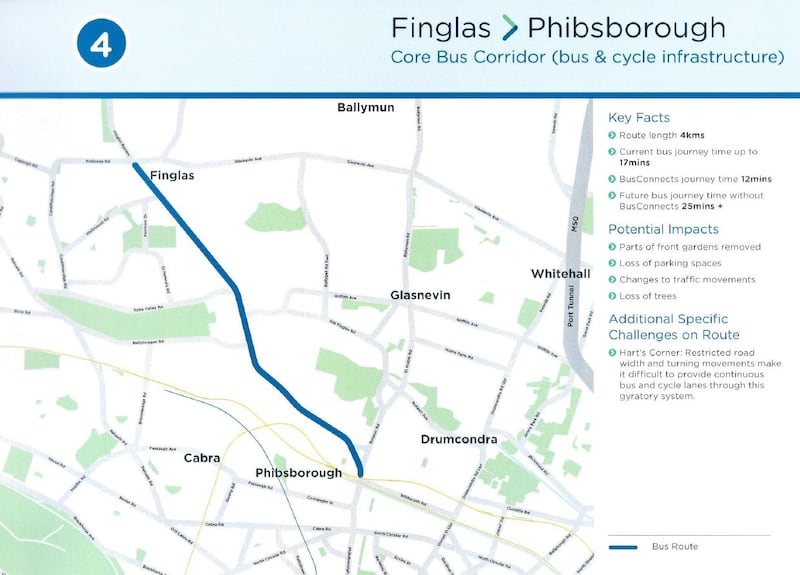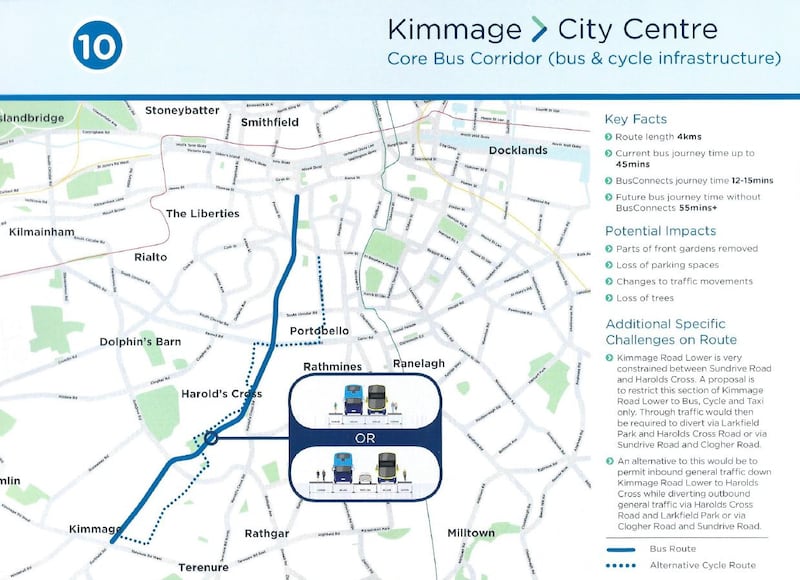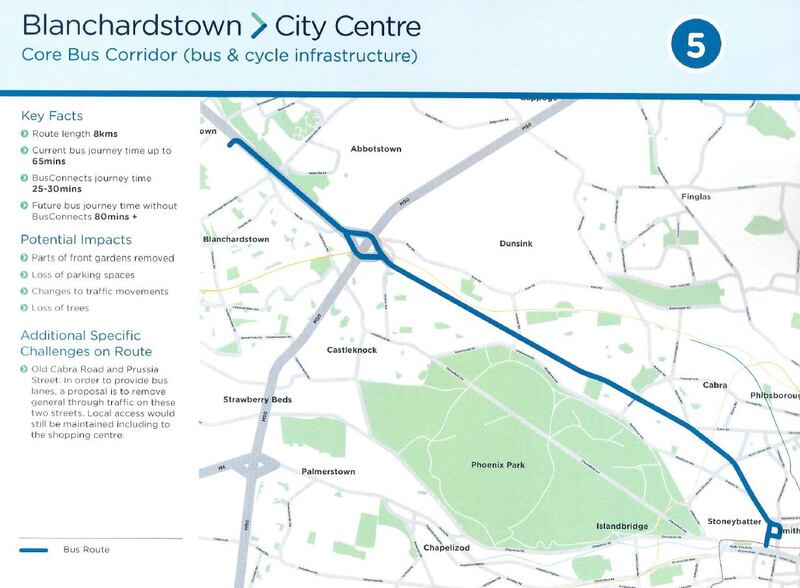The National Transport Authority says it will offer a number of measures – from paying for the landscaping of new gardens to trying to find alternative car parking – for residents along the route of a massive bus upgrade project.
The plan for the €2 billion Bus Connects project will be published today, with the focus on 16 key routes in and around Dublin city centre,
The document, seen by The Irish Times, says because there is “so little unused space” along some roads, “it will often not be possible to accommodate the bus lanes and cycle lanes in the width available”.
“In order to achieve the required space it will be necessary, in places, to acquire parts of front gardens and land in front of commercial properties to allow the bus and cycle lanes to be provided. This would require rebuilding new garden walls.”
The overall intention of the plan is to “develop these bus corridors so that each will have continuous bus priority – in other words, a bus lane in each direction”.

The focus will be on the “radial core bus corridors” , and a further enhancement of orbital bus routes around the city will follow at a future date.
The initial 16 routes covered by the plan are: Clongriffin to city centre; Swords to city centre; Ballymun to city centre; Finglas to Phibsborough; Blanchardstown to city centre; Lucan to city centre; Liffey Valley to city centre; Clondalkin to Drimnagh; Greenhills to city centre; Kimmage to city centre; Tallaght to Terenure; Rathfarnham to city centre; Bray to city centre; UCD Ballsbridge to city centre; Blackrock to Merrion and Ringsend to city centre.
The document outlines the proposed effect on each of these routes in a number of preliminary route maps.
Potential impacts
The “potential impacts” for each route – aside from that between Ringsend and the city centre – are the removal of parts of front gardens, loss of on-street car parking, loss of trees and changes in traffic movements.

Each route then has “additional specific challenges”. For example, on the Clongriffin to city centre route, the Malahide Road between Fairview and Griffith Avenue would have to be widened.
Similar impacts are listed on all the routes, but there are specific recommendations on each route. For example, the Liffey Valley to city centre route would see Mount Brown restricted to public transport, cyclists and local access only.
On the Rathfarnham to city centre route, the footpaths on the Rathmines Road would be narrowed. The NTA argues that the bus is, and will remain, the most heavily used form of public transport.
Anyone affected by compulsory purchase orders of parts of their gardens will receive compensation and money to landscape the garden once more. Tree replanting programmes are also promised, as are replacement fencing when fences are removed.
“It is the backbone of the public transport services and carries multiples of the number of passengers carried by Luas and Dart commuter rail.”

The NTA document adds: “Obviously these challenges and impacts are significant. Some roads will be impacted more than others. Some impacts will mean different things to different people depending on where they live and their homes.
“We are in no way underestimating or making light of the issues people will face, and that is why we are stating them clearly at this stage.”







